
Overview
Firefighting is the practice of extinguishing and controlling fires to protect life, property, and the environment. Firefighters are highly trained professionals who respond to emergency situations involving fires, rescues, and hazardous materials incidents. Their primary objectives include suppressing fires, conducting search and rescue operations, and providing medical assistance. Firefighters employ various tools and equipment such as fire hoses, extinguishers, and specialized protective gear to combat fires and mitigate their effects. They undergo rigorous training in fire suppression techniques, emergency response protocols, and hazard management. Firefighters work in teams, following established protocols and utilizing strategic approaches to handle different fire scenarios safely and efficiently. Their work extends beyond firefighting to encompass fire prevention, public education, and community outreach to promote fire safety and preparedness. Firefighting is a critical public service that plays a vital role in safeguarding lives and property from the devastating effects of fires.
GAO Tek´s infrared thermometers & cameras have the following applications in firefighting:
- Fire Hotspot Detection: Infrared cameras can help firefighters identify hotspots within a fire scene that may not be visible to the naked eye. By detecting and visualizing the heat signatures, firefighters can target their efforts more accurately and prioritize extinguishing hotspots to prevent the fire from spreading or reigniting.
- Search and Rescue: Infrared cameras can aid in locating individuals in smoke-filled or low-visibility environments during search and rescue operations. By detecting body heat signatures, firefighters can identify trapped or unconscious individuals, allowing for faster and more targeted rescue efforts.
- Fire Suppression Assessment: Infrared thermometers and cameras can be used to assess the effectiveness of firefighting operations by measuring surface temperatures before, during, and after suppression efforts. This information can help firefighters evaluate the progress of extinguishing the fire, identify areas of potential re-ignition, and make informed decisions regarding strategy adjustments.
- Structural Analysis: Infrared cameras can be utilized to assess the structural integrity of buildings affected by fire. By capturing thermal images, firefighters can identify areas of potential structural weakness or hidden hotspots that may pose a risk to firefighter safety during operations.
- Hazardous Materials Detection: Infrared cameras may be used to detect leaks or hotspots associated with hazardous materials in firefighting scenarios. By monitoring temperature variations, firefighters can identify potential dangers and take appropriate measures to mitigate risks during hazardous materials incidents.
Complying with Government Regulations
GAO Tek’s infrared thermometers & cameras comply or help our customers comply with the U.S. government regulations such as:
- Occupational Safety and Health Administration (OSHA) General Duty Clause: Requires employers to provide a safe working environment and may include regulations related to the use of infrared thermometers and cameras to ensure worker safety.
- National Electrical Code (NEC): Provides electrical installation standards that may apply to utilities using infrared thermometers and cameras for electrical system inspections and maintenance.
- Environmental Protection Agency (EPA) regulations for Leak Detection and Repair (LDAR): If infrared cameras are used for leak detection in utilities handling hazardous substances, compliance with EPA LDAR regulations may be required.
- Federal Energy Regulatory Commission (FERC) Reliability Standards: Sets regulations for utilities to ensure the reliability and security of the electric grid, which may indirectly impact the use of infrared thermometers and cameras for maintenance and monitoring.
- Department of Transportation (DOT) Pipeline and Hazardous Materials Safety Administration (PHMSA): Regulates the safety of pipelines and may have guidelines or requirements related to the use of infrared thermometers and cameras for monitoring and inspection.
- Federal Communications Commission (FCC) Radio Frequency Regulations: Governs the use of wireless communication capabilities in devices, including infrared thermometers and cameras that may have wireless features, and sets regulations for radio frequency emissions and device certification.
- Department of Homeland Security (DHS) Critical Infrastructure Protection: Provides guidelines and regulations related to the protection of critical infrastructure, which may include utilities using infrared thermometers and cameras for security and monitoring purposes.
- Nuclear Regulatory Commission (NRC): If infrared thermometers and cameras are used in nuclear power plants or related facilities, compliance with NRC regulations for safety and security may be required.
- Federal Aviation Administration (FAA): If infrared cameras are used for inspections on utility-owned aircraft, compliance with FAA regulations for aircraft maintenance and inspections may be necessary.
- Energy Star Program: Administered by the Environmental Protection Agency and the Department of Energy, Energy Star sets energy efficiency standards for appliances and equipment, which may apply to infrared thermometers and cameras used in utility operations.
GAO Tek’s infrared thermometers & cameras comply or help our clients comply with the Canadian regulations such as:
- Canadian Centre for Occupational Health and Safety (CCOHS): Provides guidelines and regulations related to workplace health and safety, including the use of infrared thermometers and cameras to ensure worker safety.
- National Building Code of Canada (NBCC): Contains regulations and standards for the design and construction of buildings, including electrical installations and equipment inspections that may involve the use of infrared thermometers and cameras.
- Canadian Electrical Code (CEC): Sets standards for electrical installations and equipment, including requirements that may be relevant to utilities using infrared thermometers and cameras for electrical system inspections and maintenance.
- Transportation of Dangerous Goods (TDG): Governs the transportation of hazardous materials and may have guidelines or requirements related to the use of infrared thermometers and cameras for monitoring and inspection in utilities handling such substances.
- Canadian Radio-television and Telecommunications Commission (CRTC): Regulates the use of radio frequency spectrum in Canada and may have regulations regarding the wireless capabilities of infrared thermometers and cameras.
- Canadian Nuclear Safety Commission (CNSC): If infrared thermometers and cameras are used in nuclear power plants or related facilities, compliance with CNSC regulations for safety and security may be required.
- Canadian Energy Regulator (CER): Regulates the transmission and storage of energy resources, including guidelines and standards that may indirectly impact the use of infrared thermometers and cameras in utility operations.
- Canadian Environmental Protection Act (CEPA): Contains regulations for environmental protection, which may apply to utilities using infrared thermometers and cameras for leak detection and environmental monitoring.
- Canadian Standards Association (CSA) Group: Develops and publishes standards across various industries, including electrical safety standards that may be applicable to utilities using infrared thermometers and cameras.
- Energy Efficiency Regulations: Administered by Natural Resources Canada, these regulations establish energy efficiency requirements for various products and equipment, which may include infrared thermometers and cameras used in utility operations.
Case Studies of Infrared Thermometers & Cameras in Firefighting
Here are some practical examples of using infrared thermometers & cameras in firefighting:
- Calgary Fire Department, Canada: The Calgary Fire Department has integrated infrared cameras into their firefighting operations. These cameras are used to identify hidden fires, assess fire behavior, and aid in search and rescue operations. The use of infrared cameras has enhanced situational awareness and decision-making for firefighters.
- Los Angeles Fire Department (LAFD), USA: The LAFD has adopted infrared thermometers and cameras as part of their firefighting equipment. These tools assist in locating hotspots, assessing fire behavior, and improving search and rescue operations. The LAFD has reported increased effectiveness in firefighting operations by utilizing thermal imaging technology.
- Chicago Fire Department (CFD), USA: The CFD has integrated infrared thermometers and cameras into their firefighting practices. These tools help in identifying hotspots, monitoring fire spread, and making tactical decisions during firefighting operations. The CFD has observed improved safety and enhanced situational awareness through the use of thermal imaging technology.
- Toronto Fire Services, Canada: The Toronto Fire Services have incorporated infrared thermometers and cameras to enhance their firefighting capabilities. These tools aid in detecting hidden fires, assessing fire behavior, and supporting post-fire investigations. The Toronto Fire Services have found thermal imaging technology valuable in improving firefighter safety and optimizing firefighting strategies.
- Seattle Fire Department (SFD), USA: The SFD has integrated infrared thermometers and cameras into their firefighting operations. These tools assist firefighters in locating hotspots, identifying potential hazards, and evaluating the effectiveness of suppression efforts. The SFD has experienced improved efficiency and enhanced safety by incorporating thermal imaging technology.
The main page of the infrared thermometers & cameras has more information on GAO’s Infrared thermometers & cameras and their applications in various industries:
Use of Infrared Thermometers & Cameras with Leading Software and Cloud Services in Firefighting
GAO Tek has used or has facilitated its customers to use GAO’s infrared thermometers & cameras with some of the leading software and cloud services in their applications. Examples of such leading software and cloud services include:
- Thermal Imaging Analysis Software: Specialized software designed for analyzing thermal images captured by infrared cameras. These applications allow firefighters to interpret and analyze the temperature data, identify hotspots, and track changes in heat patterns over time. Some examples include FLIR Tools, FLIR Thermal Studio, and FLIR Reporter.
- Mobile Apps for Infrared Cameras: Many manufacturers provide mobile applications that can be used with their specific infrared cameras. These apps enable firefighters to view real-time thermal images on their smartphones or tablets, adjust camera settings, and capture and annotate images for documentation and communication purposes.
- Fire Behavior Prediction Software: Software that utilizes data from infrared cameras, weather conditions, and other inputs to predict the behavior and spread of fires. These applications assist firefighters in making strategic decisions, determining the most effective suppression methods, and ensuring the safety of personnel.
- Data Logging and Analysis Software: Software that allows for the logging and analysis of temperature data collected by infrared thermometers and cameras. Firefighters can use these applications to record temperature measurements, track trends, and generate reports for documentation and analysis purposes.
- Temperature Data Logging and Analysis Software: Software designed for logging and analyzing temperature data collected by infrared thermometers and cameras. These applications enable firefighters to record and analyze temperature measurements, track trends over time, and generate reports for documentation and analysis purposes. Examples include FLIR Tools, Testo EasyClimate, and Extech EasyView.
- Incident Reporting and Documentation: Cloud services provide efficient tools for generating incident reports and documenting firefighting activities. Firefighters can input relevant information, attach thermal images, and generate standardized reports that can be easily shared with incident commanders, authorities, or other stakeholders.
- Cloud-Based Incident Command Systems: Cloud-based incident command systems offer comprehensive features for managing firefighting operations. These platforms integrate thermal imaging data, incident reporting, resource tracking, and real-time communication, providing a centralized hub for incident management and coordination.
- Data Security and Privacy: Cloud services provide robust security measures to protect sensitive thermal data captured by infrared cameras. These services typically employ encryption, access controls, and regular security audits to ensure the privacy and integrity of the data stored in the cloud.
- Integration with Command and Control Systems: Cloud services can integrate with existing command and control systems used in firefighting operations. This integration allows for seamless data sharing, synchronization, and coordination between cloud-based applications and on-site incident management systems.
- Fire Behavior Analysis Services: Cloud services that utilize thermal data from infrared thermometers and cameras to analyze and model fire behavior. These services combine thermal imaging data with other inputs such as weather conditions and fuel characteristics to simulate fire spread, predict fire behavior, and aid in tactical decision-making.
- Real-Time Monitoring and Alerting: Cloud services that enable real-time monitoring of temperature readings from infrared cameras. These services can provide alerts or notifications for abnormal temperature conditions, allowing firefighters to respond quickly to potential fire incidents or hazardous situations.
- Integration with Fire Modeling Systems: Cloud services that integrate with fire modeling software to analyze thermal data within the context of fire simulations. These services combine thermal imaging data with fire behavior models to enhance understanding and prediction of fire dynamics, assisting in tactical planning and response.
GAO Tek Has Many Customers in Firefighting
GAO Tek’s infrared thermometers & cameras have been used by many customers in firefighting, including some leading companies.
Here are some of the leading companies in firefighting:
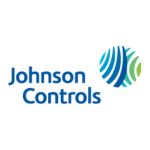 Johnson Controls
Johnson Controls
 Honeywell International Inc.
Honeywell International Inc.
 Tyco Fire Protection Products
Tyco Fire Protection Products
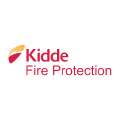 Kidde Fire Systems
Kidde Fire Systems
 The 3M Company
The 3M Company
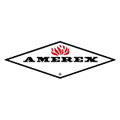 Amerex Corporation
Amerex Corporation
 Ansul Incorporated
Ansul Incorporated
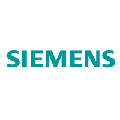 Siemens Building Technologies
Siemens Building Technologies
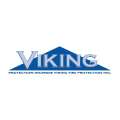 Viking Group Inc.
Viking Group Inc.
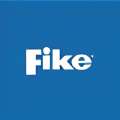 Fike Corporation
Fike Corporation
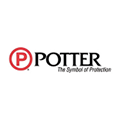 Potter Electric Signal Company
Potter Electric Signal Company
 National Fire Protection Association (NFPA)
National Fire Protection Association (NFPA)
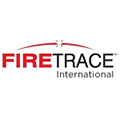 Firetrace International
Firetrace International
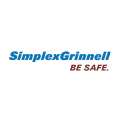 SimplexGrinnell
SimplexGrinnell
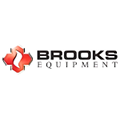 Brooks Equipment Company
Brooks Equipment Company
 Federal Signal Corporation
Federal Signal Corporation
 Chemguard, Inc.
Chemguard, Inc.
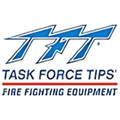 Task Force Tips, Inc.
Task Force Tips, Inc.
GAO Tek’s infrared thermometer & cameras and their applications in other industries are listed on this page:
